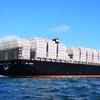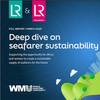Marine Insurance & the “Human Factor”
Insurance underwriters of diversified maritime exposures see a wide variety of approaches taken by vessel operators to manage human error to control risk. They have found through experience that the majority of hull and liability claims can be traced to a breakdown in preparedness and decision-making. Maritime operators that set a high bar and build well-constructed methods of managing the human element of risk – and those that monitor it closely – can save significantly on insurance costs due to lower frequency and severity of claim activity.
Managing the human factor is the most difficult of all risk management processes. We are all fallible and prone to error. It is often easier and more tangible to focus on risk management priorities, ranging from equipment maintenance and improvements to physical assets. Compared to the benefits of fleet management, the time and money spent on promoting a culture of safety, improving emergency preparedness and creating a thorough training approach to operational procedures and incident management might be viewed as less impactful. However, real world experience tells us otherwise. Operators who understand the human factor and focus on practices aimed at building a culture of safety are ultimately the ones who control risk and insurance costs most effectively.
Underwriters typically see some common recurring themes in operations that have built and continue to improve upon best practices in human factor management. The areas identified below are representative of observed practices of some of the best operators in class – operators who have successfully managed human element risk and have benefited in the form of reducing claims and insurance costs.
Best-in-Class Practices
All best-in-class practices are inter-related to some extent, but begin with personnel recruitment. Identifying and retaining crew is one of the more expensive and time-consuming aspects of any type of vessel operation – and a process that all companies would prefer to repeat as infrequently as possible. In today’s environment, there is fierce competition for both licensed and unlicensed crewmembers. Vessel operators who are able to recruit good crewmembers and manage them within well-designed programs can reduce their exposures and also improve retention of their most valued employees. While each individual operator determines the particulars of salary, rotation and benefits, it is not just a matter of paying enough or offering the best benefits. There are other traits that are commonly found to be present in most superior operations.
Key Programs and Considerations
Above all else, great operators maintain a relentless focus on one key issue: safety. Building a culture based on safety is a substantial commitment. It requires much more than distributing pamphlets and paperwork. In a perfect world, all commercial and passenger vessels would have state-of-the-art safety and risk control programs that begin with hiring practices and never really end – because safety innovations are constant. Operators who promote a culture of safety tend to follow these basic principles:
• Demonstrate consistent management support for and engagement with each vessel’s captain and crew.
• Establish and carry out routine communications and meetings with captains and crew to maintain a current understanding of vessel and crew condition.
• Provide incentives to captains and crew to be active participants in the company’s safety culture.
• Establish, monitor and regularly update a formal, written safety program.
• Evaluate crew competencies regularly, including licensing, credentials, medical fitness and supervision procedures for lesser experienced crew.
• Construct thorough operations manuals that clearly define roles aboard the vessels, establish procedures and checklists, and manage record retention and internal review processes.
• Create and follow through on a formal vessel maintenance program with established intervals and record-keeping.
• Stay abreast of evolving trends to understand what contributes to marine accidents.
• Run periodic drills and simulations to prepare for worst-case scenarios.
Building a Safety Management System
Safety Management System (SMS) is a term that refers to a comprehensive business management system designed to manage safety elements in the workplace. It is an effort to reduce risk to a level that is as low as is reasonably practicable. A safety management system can be created to fit any business type, size and/or industry sector. Ideally, a safety management system woven into the fabric of companies large or small will become part of the culture.
There are three broad components of an SMS – ethical, legal and financial. A clear obligation is placed on an employer from an ethical standpoint to ensure that work activities and the workplace are safe. Legally, there are ample regulations and legislative requirements that define how this is achieved and measured. Research shows that effective safety management can reduce the financial exposure of organizations by reducing direct and indirect costs associated with accidents. In addressing these three components, effective SMS models generally contain the following elements:
• A clear definition of how the organization is structured to manage risk.
• Identification of workplace risks and accompanying controls.
• An effective plan for communicating across all levels of the organization.
• Checkpoints to identify and correct non-conformities with the plan.
• A commitment to continuous process improvement – regularly monitoring and adjusting.
The Way Forward
Improving safety and reducing the margin of error in human factors can yield significant benefits to all vessel operators. The International Maritime Organization, whose primary purpose is to develop and maintain a comprehensive regulatory framework for shipping, states in its preamble: “The cornerstone of good safety management is commitment from the top. In matters of safety and pollution prevention, it is the commitment, competence, attitudes and motivation of individuals at all levels that determines the end result.” It is clear that efforts to improve safety bear significant results. It is never too late to establish or refresh strong programs that can prevent incidents. The process might seem daunting, but there are resources available to assist in all of these efforts.
Resources – You’re Not Alone
Most operators are already familiar with formal safety and operational programs through requirements set by regulatory agencies, auditors and safety management systems. If vessel operators are not familiar or only beginning to make their operations more formal, however, there are multiple resources available that can be consulted, including:
• The United States Coast Guard has created multiple centers of expertise – towing, cruise, LNG – all staffed by individuals who can be contacted to answer any regulatory questions or otherwise offer guidance. This complements their efforts at the local and national level.
• The American Waterways Operators (AWO) Responsible Carrier Program has multiple best practices for towing vessels, barges, etc., that are applicable at almost every level of operation.
• The Passenger Vessel Association functions much as the AWO, except it is tailored for passenger vessels. Membership within the association will grant access to publications, procedures, checklists, etc., many of which would be considered “best practices.”
• Your insurance provider’s risk control specialists will work with you to get ahead of issues before losses occur and will work with your management and staff in customizing solutions.
There are many resources available to vessel operators or owners seeking to improve their overall operations, not just those mentioned above. While the initial process can be challenging, installing a formal safety management system will improve the ease and effectiveness of management.
The Bottom Line
An organization that has built a great culture based on safety and preparedness also builds great momentum in all aspects of its operations – including recruiting and retaining the best employees. From an underwriter’s perspective, companies that build and regularly monitor and update effective and comprehensive safety programs benefit from lower frequency and severity of insurance claim activity. Be sure to work closely with your insurance broker, your underwriters and their marine risk control specialists in designing your plan. As your results develop, be sure to communicate your success – underwriters who are properly tuned-in often respond favorably with competitive insurance programs.
(As published in the November 2014 edition of Maritime Reporter & Engineering News - http://magazines.marinelink.com/Magazines/MaritimeReporter)














